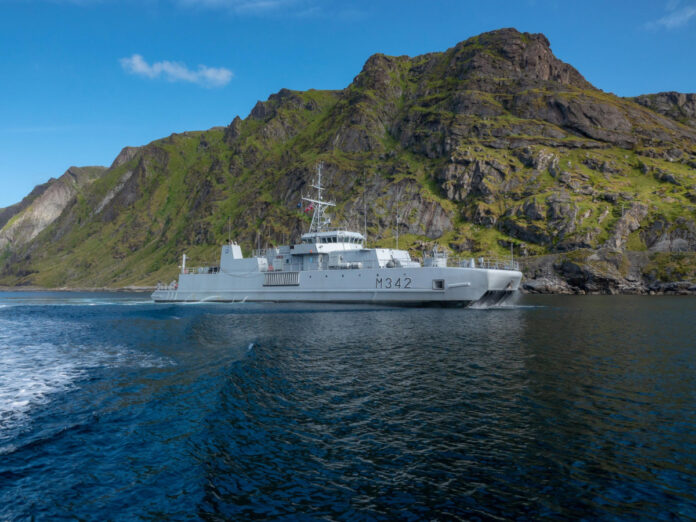NATO Mine Countermeasures Group 1 (SNMCMG1) has conducted mine countermeasure operations in the Danish straits near Kattegat in order to detect historic explosive ordnance left in the waters after WWII, NATO Maritime Command announced. The operation is a contribution to the Danish compiled historic ordnance database.
SNMCMG1 carried out the sea-bed search from 21 -24 September 2020, identifying 13 historical mines among 72 mine-like objects. In total seven mine-hunters and the flagship from eight different nations were involved in the operation, searching an area of 12.44 square nautical miles.
During World War II several thousand mines were dropped in Danish waters by the British in order to hamper German naval movements through the Danish Straits. The area in the northern part of the Great Belt was especially heavily mined in order to restrict the freedom of movement through this essential passageway.
During the past several decades numerous operations have been performed by both Danish and Allied mine countermeasures units. Several hundred mines have already been identified and removed, but many more are still left. The constant movement of sand and mud on the seabed that continuously cover and uncover the remaining mines makes the task very challenging.
The data collected by SNMCMG1 was handed over to the Danish Navy to make this area a safer place for fishermen, merchant shipping, underwater operations and civilian installations.
SNMCMG1 is currently comprised of eight assets: HNoMS Maaloey (Norway), ENS Admiral Cowan (Estonia), FGS Groemitz (Germany), BNS Crocus (Belgium), LVNS Imanta (Latvia), HNLMS Schiedam (Netherlands), flagship LNS Jotvingis (Lithuania) and NATO partner FNS Vahterpaa (Finland).



